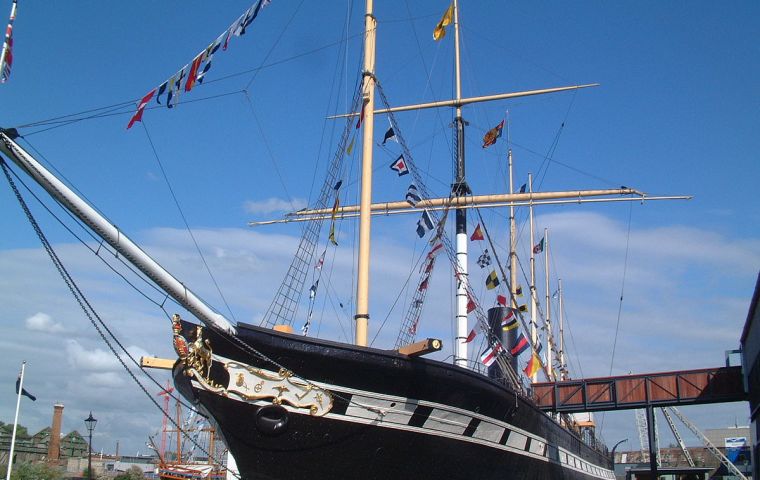MercoPress. South Atlantic News Agency
Vessel linked to Falklands' history and turned into Bristol museum competing for the EU Museum of the Year
 SS Great Britain at the Bristol Museum
SS Great Britain at the Bristol Museum A vessel closely linked to the Falkland Islands' history and which was later to become the heart of the SS Great Britain in Bristol museum, is one of three British museums nominated along with the British Motor Museum and the D-Day Story at Portsmouth which have been shortlisted for the prestigious 2019 European Museum of the Year, (EMYA) Award. Last year’s EMYA winner was London’s Design Museum.
The award promotes innovative approaches in the museum sector, particularly focused on the quality of exhibitions and new developments in the sector.
The winner will be announced during the annual conference of the European Museum Forum in Sarajevo on May 25.
When she was completed in 1845, the SS Great Britain was the longest passenger ship in the world. Designed by Bristol’s favorite son Isambard Kingdom Brunel, this steamer-turned-museum is now visited by 150,000-200,000 people a year.
The site features a land museum, the ship itself, and the ‘glass sea’ – glass panels that hold the ship in suspension so visitors can walk around beneath the hull. Brave guests can sign up for ‘Go Aloft’, and a chance to climb the ship’s rigging that stretches 25m into the sky.
SS Great Britain was the first iron steamer to cross the Atlantic, which she did in 1845, in the time of 14 days. The ship is 322 ft (98 m) in length and has a 3,400-ton displacement. She was powered by two inclined 2 cylinder engines of the direct-acting type, with twin 88 in (220 cm) bore, 6-foot (1.8 m) stroke cylinders. She was also provided with secondary masts for sail power. The four decks provided accommodation for a crew of 120, plus 360 passengers who were provided with cabins, and dining and promenade saloons.
When launched in 1843, Great Britain was by far the largest vessel afloat. But her protracted construction time of six years (1839-1845) and high cost had left her owners in a difficult financial position, and they were forced out of business in 1846, having spent all their remaining funds refloating the ship after she ran aground at Dundrum Bay in Country Down, North. Ireland after a navigation error.
In 1852 she was sold for salvage and repaired. Great Britain later carried thousands of immigrants to Australia from 1852 until being converted to all-sail in 1881.
In 1886 she was badly damaged in a Cape Horn gale and the vessel for many years remained at Sparrow Cove in the outer harbor of Stanley. She was used as a warehouse, quarantine ship and coal hulk.
In 1970 Sir Jack Arnold Hayward OBE (1923-2015) paid for the vessel to be raised and repaired enough to be towed north through the Atlantic back to the United Kingdom, and returned to the Bristol dry dock where she had been built 127 years earlier. Hayward was a prominent businessman, developer, philanthropist and owner of the English football club Wolverhampton Wanderers.
For many years SS Great Britain became a postcard of Stanley Harbor and the mizzen mast of the SS Great Britain is mounted proudly on Victory Green in central Stanley.




Top Comments
Disclaimer & comment rulesCommenting for this story is now closed.
If you have a Facebook account, become a fan and comment on our Facebook Page!